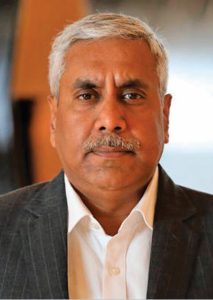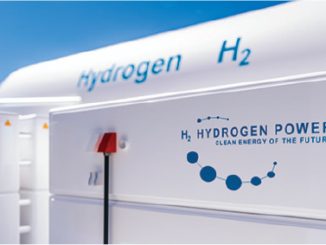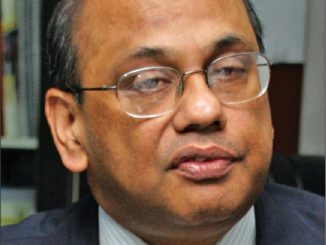 In a recent interview with Power Line, Shivanand Nimbargi, MD and CEO, Ayana Renewable Power, shared his perspective on the current state of the power sector, the outlook for renewable energy and the prospects for green hydrogen. He also spoke about Ayana Renewable’s near-term and medium-term plans and priorities. Excerpts…
In a recent interview with Power Line, Shivanand Nimbargi, MD and CEO, Ayana Renewable Power, shared his perspective on the current state of the power sector, the outlook for renewable energy and the prospects for green hydrogen. He also spoke about Ayana Renewable’s near-term and medium-term plans and priorities. Excerpts…
How do you rate the performance of the power sector in the last one year or so? What were the key hits and misses?
In the last one year, total power generation growth, including conventional and renewable energy, has been close to 8 per cent, the highest since 2014-15 when it was slightly above 8 per cent. The sector has also obviously recovered well from the pandemic-induced slowdown, when generation and demand both plummeted. Private sector participation has accounted for about half the total generation, with the centre and the states making up the rest at about a quarter each.
The country is set to become the world’s third largest economy by 2029, as per a report by the State Bank of India’s Economic Research Department. Annual electricity demand, in tandem, is likely to grow 7.2 per cent on average until mid-2027, nearly double the 4 per cent growth rate seen during the five years to March 2022. The country already broke the record with power demand increasing about 19 per cent in the first quarter of the current fiscal. To meet its growing energy demand, the country will need to add a power system the size of the European Union by 2030, as per the International Energy Agency.
On the supply side, there has been a significant addition of transmission lines at the 765 kV, 400 kV and 220 kV levels to make the evacuation of renewable energy and conventional energy smoother. Programmes such as PM Gati Shakti, incentives under the production-linked incentive (PLI) scheme or the reforms-based and results-linked revamped distribution sector scheme, granting of “infrastructure” status to energy storage including grid-scale battery systems, and Mission Innovation CleanTech Exchange to accelerate clean energy innovation have been positive steps that will lend support to power sector growth.
However, we are behind schedule. We are still energy deficient. India has installed just over half of its planned renewable energy capacity, as per experts. The target, set in January 2018, would have increased India’s renewable energy capacity to 43 per cent of its current energy mix. That target is now expected to be achieved next year. Issues ranging from inconsistent central and state-level renewable energy policies, excessive customs duties on renewable energy-related products and financing issues have led to this shortfall. We have set an ambitious target of 500 GW clean energy by 2030 on the way to net-zero carbon emissions. While improving the financial health of government-owned power companies is one way to build renewable capacity in India, we also require foreign funding. As per a report, for India to achieve its Nationally Determined Contributions under the Paris Agreement, the country requires about Rs 162.5 trillion ($2.5 trillion) from 2015 to 2030, or roughly Rs 11 trillion ($170 billion) per year. So far, India remains underfunded, with climate finance from developed countries falling short.
What are your views on emerging renewable energy technologies such as green hydrogen?
Green hydrogen holds immense potential as an enabler of the global transition to sustainable energy and net-zero emission economies. World over, there is unprecedented momentum to make hydrogen an important component of the energy mix, especially for storing energy from renewables. The resource is already extensively used across industrial applications. However, less than 1 per cent of global hydrogen production is derived from renewable energy (green hydrogen) or from fossil-fuel plants equipped with carbon-capture storage (blue hydrogen).
Once renewable energy capacities rise, and excess capacity becomes available, green hydrogen should play a key role in decarbonisation, particularly for industries that cannot be electrified – the so-called “hard-to-abate sectors” such as long-haul road transport and aviation. Sectors currently using hydrogen in their processes such as steel, cement and chemicals can and should replace existing fossil fuel feedstock-driven applications with green hydrogen.
India’s distinct advantage in being low cost and renewable energy rich can make it one of the largest producers of low-cost hydrogen. A NITI Aayog report predicts that hydrogen demand in India could grow more than fourfold by 2050, representing almost 10 per cent of global demand. Considering that most demand could be met with green hydrogen in the long term, the cumulative value of the green hydrogen market in India could reach $8 billion by 2030.
What is your outlook for the renewable energy sector going forward?
Clean energy is a core element of India’s sustainable growth story. The country took a pledge at COP26 to achieve net-zero carbon emissions by 2070 and we are already seeing an accelerated shift to renewable energy production, rising electrification of transportation and industries, and a push for sustainable energy carriers such as green hydrogen. This trend is likely to pick up pace as we achieve critical consensus on key issues such as technology transfer, climate finance, and even carbon border tax. Further, the government announced its intention of creating an Indian carbon credit market by amending the Energy Conservation (Amendment) Bill, 2022. This will compel industries to decarbonise. In India, the private sector is committed to lowering the country’s carbon footprint. Many organisations have announced plans for either energy transition, technology innovation, distributed renewable energy development, or independent power production such as Ayana Renewable Power.
A demand push from green hydrogen, data centres, electric vehicles (EVs), and electrified rails, among others, will require renewable energy to do the heavy lifting as climate change risks rise. For India to emerge the victor, it must increase investments in building its capabilities in clean energy, climate technology, and R&D.
What are the key challenges facing renewable energy developers? What are your suggestions for mitigating these?
India needs institutional changes and policy reforms to meet its clean energy targets. The entire economy needs to move towards meeting the complete net-zero requirements rather than towards just achieving another 500 GW in the following decades.
To become a leader in renewables and emerging technologies, India needs to develop its transmission network, and build wind turbines, solar modules, solar panels, etc. on a massive scale. The government needs to promote investment via PLI schemes, especially for offshore turbines and storage technologies so that their manufacturing can be scaled to become competitive. Investment in R&D to innovate and be a technology leader is vital. The policy restrictions with respect to approved module manufacturers and the duty structure need to be rationalised till domestic capacity comes up. In some cases, old regulations should be allowed to prevail. Take the recent CERC Deviation and Settlement Mechanism mechanism. Over-injection of renewables beyond 10 per cent is not payable to renewable energy generators, acting as a deterrent for developers and posing a potential revenue loss of up to 5 per cent. Developers are currently facing a challenge in precise forecasting and scheduling, and technology will only mature in three to four years. Policy stability and uniformity across states are crucial for the development of the sector.
The recently notified Late Payment Surcharge Rules 2022 do a disservice to renewable energy. The outstanding payments are classified under EMI for a longer duration and there is no guarantee that the future payments will come on time. Some states also levy an exorbitant charge on renewable energy developers under state policies and put restrictions on interstate transmission system-connected renewable projects. Land acquisition and conversion to non-agricultural purposes also take a long time. We must streamline rules for land acquisition in different states, making the approval-granting process time-bound and efficient. Further, the proposition of mandatory renewable purchase obligations by states needs to be steadily increased to propel renewables growth.
What have been the key business highlights for Ayana Renewable Power in the past year?
Ayana has reached close to 4 GW of total energy capacity. We commissioned a 300 MW solar project in Bikaner, Rajasthan, and added 400 MW of solar capacity through various acquisitions in top renewable energy producing states. Further, we teamed up with Greenstat Hydrogen India for a utility-scale green hydrogen pilot project and with the Hyderabad-based Greenko Group for India’s first power storage facility in Andhra Pradesh to enable round-the-clock (RTC) power. We signed an expression of interest with the Karnataka government to develop wind and solar power projects totalling 2 GW capacity in the state, with an investment of around Rs 120 billion. We are aspiring to add 2 GW of renewable capacity every year, provided favourable market conditions prevail. This will be a mix of solar, wind, hybrid, RTC power and green hydrogen projects. We have further expanded our corporate headquarters in Bengaluru this month. This expansion is geared towards adding more talent to advance India’s transition to green energy and scaling up our project portfolio.
What are some of the new opportunities that Ayana is pursuing?
Our opportunity lies in India’s energy appetite and commitment to net-zero carbon emissions. This year, India’s electricity demand is expected to rise at the fastest pace in at least 38 years. Further, as per the IEA, the country is expected to overtake the European Union as the world’s third-largest energy consumer by 2030. Within this time, India is aiming for 500 GW of clean energy and the government has even allowed 100 per cent FDI in the power sector. Plans such as PLI, the National Hydrogen Mission, the National Infrastructure Pipeline 2019-25, the Integrated Power Development Scheme, Power for All, FAME I & II for EVs, issuance of sovereign green bonds, as well as conferring infrastructure status on energy storage systems, including grid-scale battery systems, are encouraging steps. There is a strong commitment to a sustainable energy future in the country. Ayana has built a strong inhouse team for RTC tenders, battery storage technology and green hydrogen. We are handpicking talent and projects to help us advance our mission. We are even setting up a small green hydrogen pilot project near one of our solar plants in Karnataka. This will be one-of-a-kind.
What are the company’s near-term and medium-term plans and priorities?
We are aspiring for 10 GW of capacity by 2025 and augmenting our RTC capacity. We aim to achieve this goal at the lowest possible cost to maintain affordability and facilitate accelerated adoption. Other focus areas are green hydrogen and green ammonia. We are building our portfolio based on tenders and bids advertised through central bidding agencies like SECI and NTPC. Our investors, such as NIIF, BII and Eversource, are optimistic about renewable energy growth in India and its potential for value creation. Further, Ayana supports and contributes to the communities where it is present by setting up skill training centres and providing employment opportunities to the local population. Our centre in Anantapur, Andhra Pradesh, has trained 180-200 people. We have also set up a permanent skill training centre in Rajasthan where around 200 people have been trained and around 150 people have been able to get employment. We are now setting up a skilling centre in a remote area of Hubli in Karnataka that will train people in the digital space.



